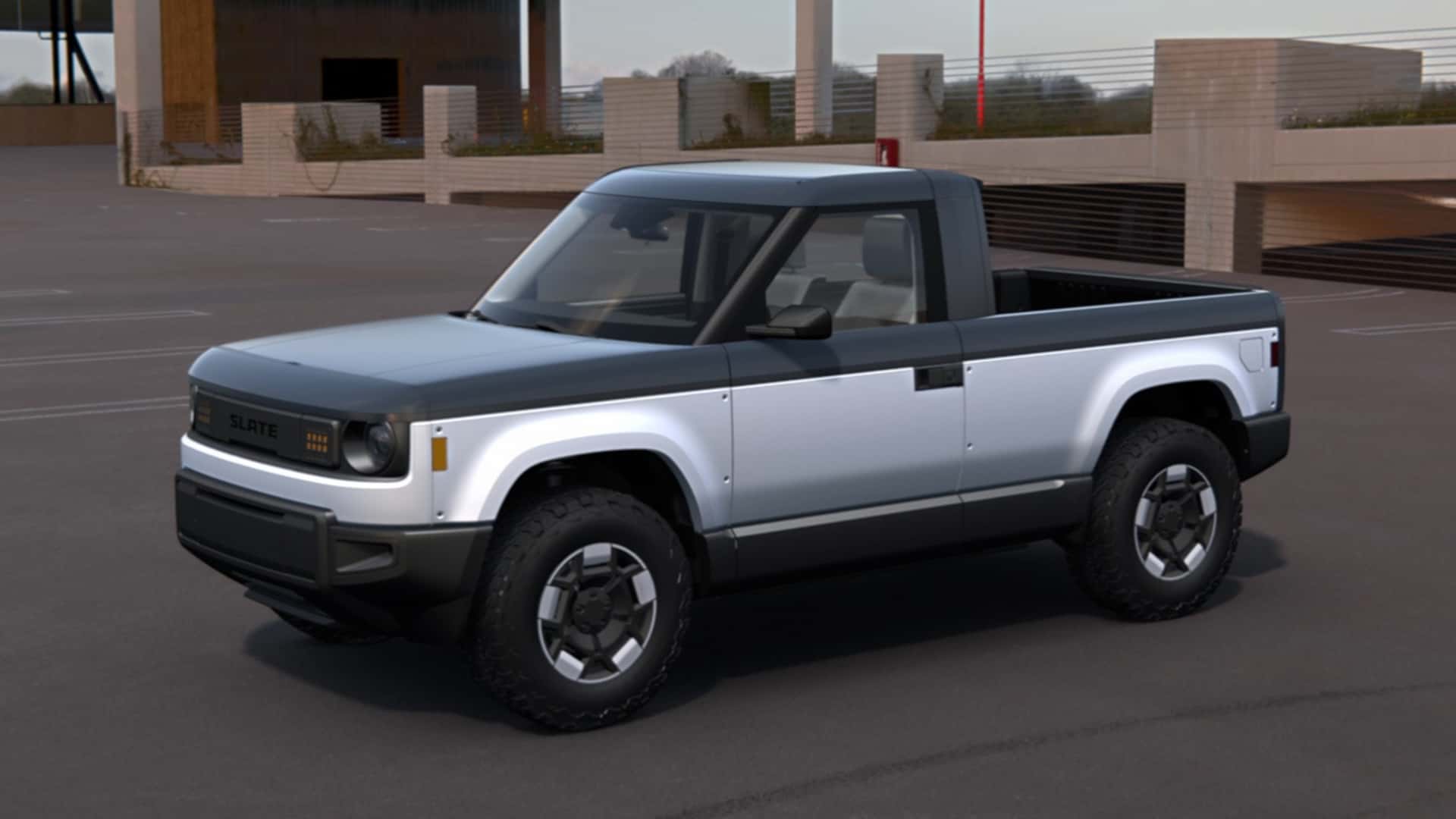The Electric Truck Dream Faces a Major Hurdle
The electric truck from Slate Auto was once expected to hit the market next year, promising an affordable price point under $20,000 after federal incentives. However, this vision now seems like a distant dream, as the Trump administration’s recently passed spending package has eliminated the very tax credits that made such a low price possible.
Slate Auto, backed by Jeff Bezos, had initially aimed to launch an ultra-affordable electric pickup truck. The company’s approach was unique: a no-frills design that allowed customers to customize their vehicles with additional features over time, similar to assembling a life-sized Lego kit. This strategy was meant to make EVs more accessible and reduce the upfront cost.
The base model of the truck was stripped down to the essentials—just a single gray color, two seats, a flatbed, a steering wheel, and a simple gauge cluster displaying battery status and charging information. Everything else, from paint options and power windows to infotainment systems, cupholders, and even speakers, would be available as add-ons. Customers could also convert the truck into an SUV or fastback using bolt-on roof panels.
Despite the minimalistic design, the concept resonated with consumers. The company received over 100,000 reservations within two weeks of unveiling the truck. However, the recent changes in policy have left the company facing a significant challenge.
Falling battery prices and Slate’s minimalist approach could still allow it to price the vehicle competitively. But without the federal tax credit, the company loses its strongest selling point and must now find new ways to attract buyers.
With Tesla and traditional automakers moving closer to sub-$30,000 EVs that are not as bare bones, Slate will need to demonstrate how its stripped-down truck still offers value without government assistance.
Key Features of the Slate Auto Electric Truck
- Minimalist Design: Focus on essential components to keep costs low.
- Customization Options: Allow buyers to add features as needed.
- Modular Construction: Enable conversion into different vehicle types using bolt-on parts.
- Affordable Base Model: Aimed at making electric trucks accessible to a broader audience.
Challenges Ahead
The elimination of federal tax credits means that Slate Auto must now compete in a market where other companies are also working to bring down the cost of electric vehicles. While the company’s approach is innovative, it may struggle to convince consumers that a no-frills truck is worth the investment.
Additionally, the company has not yet disclosed the costs of the add-ons or the potential final price of the vehicle. This lack of transparency could be a barrier for some buyers who are looking for clear pricing information.
Despite these challenges, there is still hope that Slate Auto can find a way to make its electric truck a viable option for consumers. By focusing on affordability and customization, the company may be able to carve out a niche in the growing EV market.
As the electric vehicle landscape continues to evolve, it will be interesting to see how Slate Auto adapts to these changes and whether its vision for an affordable electric truck can become a reality.







